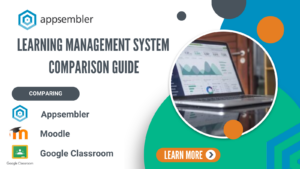Trying to replicate classroom-based learning online, with PowerPoints and slide decks, isn’t the recipe for success. Zoom fatigue has hit many people and the last thing they want to do is attend online training sessions that mimic instructor-led training.
A third of IT decision makers said they struggled to deliver training sessions while working remotely, while 31% said they can’t keep learners engaged for long enough to complete proper training. In addition, only 9% of companies have trained staff to use all their technologies correctly — resulting in a significant knowledge gap.
Current methods of delivering customer training aren’t as impactful as they could be. If you aren’t able to find ways to engage your customers when delivering training, then your support staff will end up fielding more questions from untrained customers. Your customers also won’t use –– or even know about –– all of the features in your software. They won’t be able to realize its value, which could lead to lower product adoption, dissatisfaction with your product, and higher rates of churn.

To that end, interactivity is the key to delivering successful online training in 2021, because to be successful, learners need to be active participants in their learning process. Here are five interactive and engaging activities you need to use to improve learning experiences.
1. Self-Paced, Bite-Sized Content
Delivering your online training in bite-sized chunks –– also known as microlearning –– aids knowledge retention and reduces the chances of overwhelming learners. This approach appeals to today’s learners who are drowning in a sea of data, and are often jumping from one task (or device) to the next. Self-paced training also takes into account the vast array of learning styles and habits present in today’s workplace.
If your customers can access small chunks of interactive training when it suits them, they are more likely to finish the course compared to if you try to deliver all of the training at once under a strict and demanding schedule. And to break up the pace of the course, they can include a variety of videos, graphics, presentations, product demos, virtual training labs, and more.
2. Quizzes
Hands up, who did a Zoom quiz or survey in 2020? Whether it was a trivia night with your friends or a status check at work, almost everyone took part in some kind of quiz or survey in 2020.
But quizzes were already big business; in fact, Buzzfeed seems to be thriving just on its weird and wacky quizzes.
And while we don’t recommend Buzzfeed-like quizzes for professional training courses, we do recommend embedding more of them throughout your training rather than just at the end of the course to test learners’ knowledge.
3. Peer Learning and Discussions
Teaching other people about what you have learned is the most effective way to retain information and master new skills. Once users have learned the basics of your software, empower them to teach this knowledge to other people through peer learning. If new users have a question, rather than submitting a ticket to your support team, they can ask other learners via a discussion thread. If implemented correctly, peer learning and discussions will enhance your learners’ knowledge retention while lowering their dependency on your customer support team.
4. Immersive Task Simulations
Your customers need to understand how your software works in real-life tasks and scenarios that they’ll deal with on a daily basis. Instead of providing theoretical scenarios, give them virtual training labs that are tailored to the specific course they’re taking. Not everyone will be using the same features in the same way –– for example, your sales and marketing teams will use different parts of a CRM –– so virtual training labs need to focus on the functionality that each learner will use most.
Part of the learning process is also allowing your users to make mistakes within your software, so they can figure out their mistakes and correct themselves. It’s all about learning through trial and error, but in a safe and fenced-off environment that doesn’t have any impact in the real world. If they have these immersive, learn-by-doing experiences with your product, they will feel more confident about what they’re doing when they’re using your product on their own.
5. Gamification
Learning through play is effective, no matter what age you are or what you’re learning. If you’re delivering training to dispersed workforces, you can make it more fun by using games and competitive elements. And instead of relying on text formats, create mini games that users have to complete before moving to the next level. This makes learning new skills and information enjoyable.

Incentivize learners by assigning points or creating badges that you award to learners when they complete specific modules or parts of your training. Make it competitive by setting up a leaderboard where users can track their progress against their peers and managers. This will encourage people to complete more of their training and not fall behind.
Increasing Engagement and Cutting Costs Through Online Training Activities
By using these five online training activities, you can better engage users and make learning more fun, which will make your training more effective. Users are better able to retain information and will be more motivated to complete all the required tasks.
And by empowering users to teach their peers and giving them the ability to engage in discussions with their fellow learners, you can reduce the support they need and improve their knowledge retention. This will in turn reduce your support costs, increase customer satisfaction with your product, improve product adoption, and lower customer churn.



